Plastic Resin Supplier Finder
Ever wondered where the plastic that ends up in your products actually comes from? From oil fields in the Middle East to recycling plants in Europe, the journey of plastic resin is a complex web of raw materials, chemistry, and logistics. Understanding this supply chain helps manufacturers cut costs, meet sustainability goals, and avoid costly shortages.
Key Takeaways
- Virgin plastic resin originates mainly from crude oil and natural gas via petrochemical processes.
- Recycled plastics now supply up to 30% of global demand, with PET and HDPE leading the way.
- Major supply hubs include Houston, Rotterdam, and Singapore, each offering distinct pricing dynamics.
- Bio‑based polymers such as PLA are gaining traction but still represent a small share of total volume.
- Choosing a supplier requires balancing price, quality, regulatory compliance, and sustainability certifications.
What Exactly Is "Plastic Resin"?
Plastic resin is a raw polymer material that manufacturers melt, shape, and convert into finished plastic parts. It comes in pellet or granule form, ready for injection molding, extrusion, or blow‑molding. The term "resin" is often used interchangeably with "polymer," but in supply‑chain talk it specifically refers to the bulk commodity before any additives are mixed in.
Primary Feedstock Sources
The bulk of virgin plastic resin is derived from two fossil‑fuel feedstocks:
- Crude oil (or its distilled fractions) feeds ethylene and propylene crackers, the building blocks for polyethylene (PE) and polypropylene (PP).
- Natural gas provides ethane, which is a cheaper source of ethylene in regions with abundant gas supplies.
These crackers produce basic monomers (ethylene, propylene, vinyl chloride, etc.) that are polymerized into the final resin.
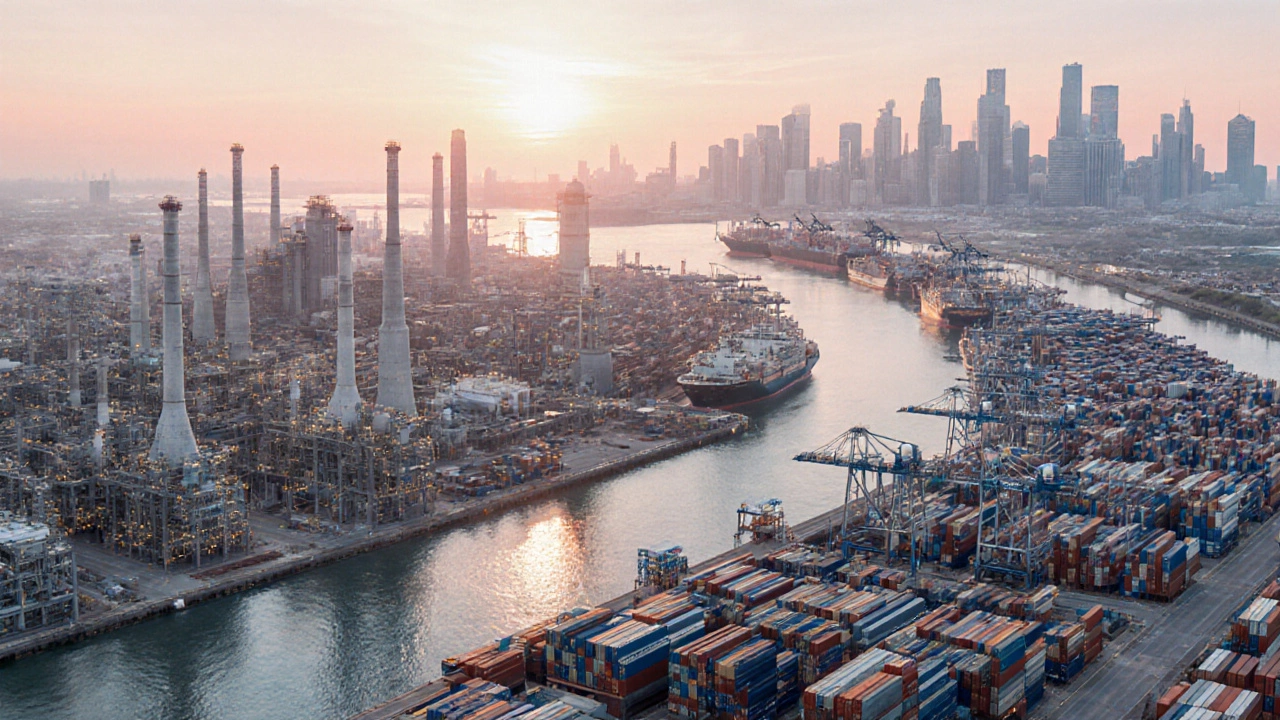
Major Global Supply Hubs
Because the cracking process is energy‑intensive, manufacturers cluster near large petrochemical complexes. The three biggest hubs are:
- Houston, USA - Home to the Gulf Coast’s massive ethylene complex, offering low‑cost PE and PP.
- Rotterdam, Netherlands - Europe’s gateway, feeding the continent’s automotive and packaging sectors.
- Singapore - A strategic port for Asian markets, with strong ties to ASEAN manufacturers.
Being close to a hub reduces freight costs, shortens lead times, and improves supply‑chain resilience.
Leading Suppliers by Polymer Type
Below is a snapshot of the top players for the most common polymers as of 2025. Prices are indicative and vary with market cycles.
| Polymer | Major Supplier | Headquarters | Typical Price (USD/ton) | Key Markets |
|---|---|---|---|---|
| Polyethylene (PE) | ExxonMobil | USA | 1,200‑1,400 | Packaging, Pipe, Consumer Goods |
| Polypropylene (PP) | SABIC | Saudi Arabia | 1,050‑1,250 | Automotive, Textiles, Medical |
| PET (Polyethylene Terephthalate) | Indorama Ventures | Thailand | 1,300‑1,500 | Bottles, Fibers, Films |
| PVC (Polyvinyl Chloride) | Formosa Plastics | Taiwan | 950‑1,100 | Construction, Wire Coating |
Recycled and Bio‑Based Alternatives
Environmental pressure and regulations (EU’s Recycled Content Directive, US’s EPA plastics rule) have pushed manufacturers toward non‑virgin sources.
- Recycled PET (rPET) is produced from post‑consumer bottles, offering a 55‑80% carbon‑footprint reduction.
- Recycled HDPE (rHDPE) is common in milk jugs and pipe applications.
- Polylactic Acid (PLA) is a bio‑based polymer derived from corn starch, used mainly in disposable foodware.
- Polyhydroxyalkanoates (PHA) are fully biodegradable, though currently expensive.
Recycled streams are usually sourced from regional sorting facilities. Key suppliers include Loop Industries (rPET) and Veolia (rHDPE processing).
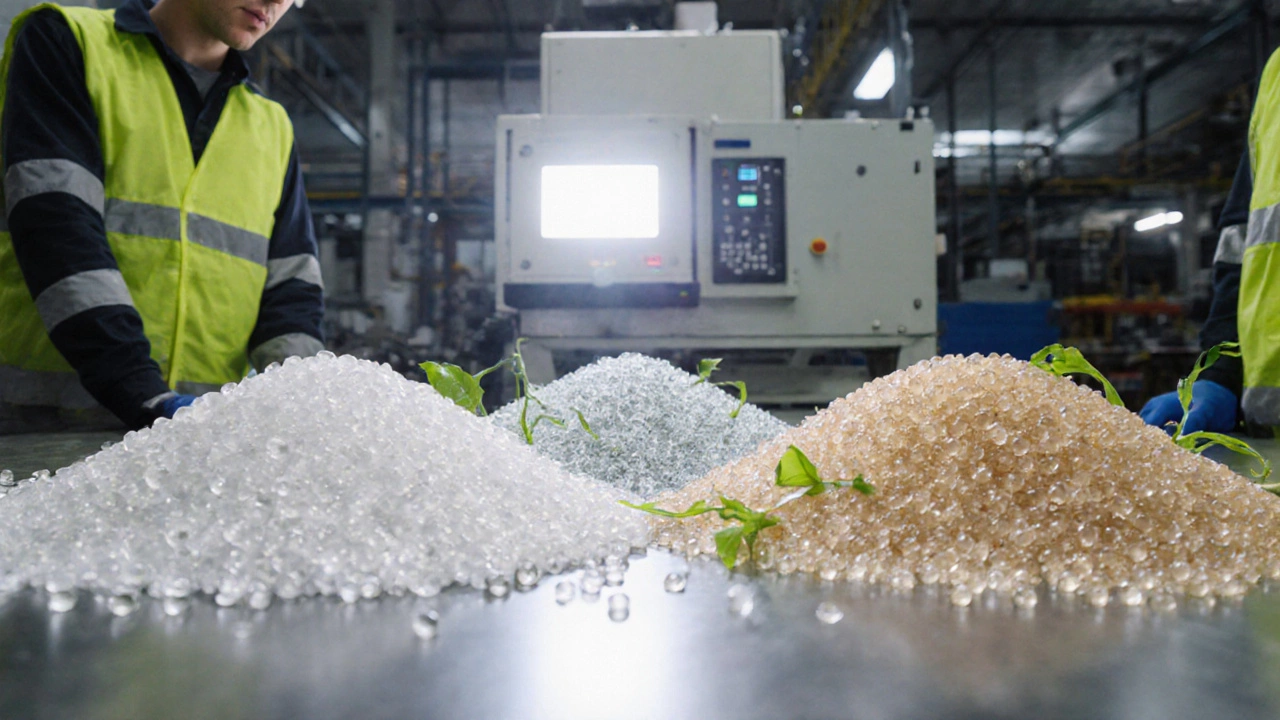
Decision Checklist for Selecting a Plastic Supplier
- Price vs. volume - Check if bulk contracts provide discounts that outweigh freight savings from a nearer hub.
- Quality certifications - Look for ISO 9001, ISO 14001, and polymer‑specific standards like ASTM D638.
- Supply reliability - Review the supplier’s historical uptime, especially during feedstock price spikes.
- Regulatory compliance - Ensure the product meets REACH, RoHS, or FDA requirements relevant to your end‑use.
- Sustainability credentials - Verify recycled content percentages or bio‑based claims with third‑party audits (e.g., TÜV, UL).
- Logistics footprint - Map shipping routes; shorter sea legs reduce carbon emissions and lead‑time risk.
Using this checklist in a simple spreadsheet can turn a vague supplier search into a data‑driven decision.
Risks, Compliance, and Mitigation Strategies
Even with a solid supplier list, manufacturers face several pitfalls:
- Feedstock volatility: Crude oil price swings can double resin costs overnight. Mitigate with price‑hedging contracts or multi‑source sourcing.
- Regulatory changes: New EU packaging directives may mandate higher recycled content. Keep a compliance watch‑list and engage legal counsel early.
- Quality inconsistency: Recycled batches can vary in melt flow index (MFI). Request sample testing before full‑scale orders.
- Supply chain disruptions: Natural disasters in the Gulf Coast have caused historic shortages. Maintain safety stock or qualify secondary suppliers in Asia or the Middle East.
Building strong relationships with logistics partners and adopting digital supply‑chain visibility tools (e.g., SAP IBP, Kinaxis) further reduces surprise.
Next Steps and Troubleshooting
Ready to lock in a plastic source? Follow these quick actions:
- Identify the polymer you need and the required grade (e.g., HDPE 500µm, PET clear).
- Map the nearest supply hubs and request price quotes from at least three vendors.
- Ask for a material data sheet (MDS) and verify compliance certificates.
- Run a pilot melt‑flow test on a small sample to confirm processing performance.
- Finalize contract terms, including minimum order quantities, lead times, and penalty clauses for late deliveries.
If you encounter unexpected price spikes, revisit step2 and add a supplier from a different hub. For quality issues, request a corrective action plan and consider a third‑party lab retest.
Frequently Asked Questions
What is the difference between virgin and recycled plastic resin?
Virgin resin is produced directly from petrochemical feedstocks (crude oil or natural gas) in a controlled polymerisation process. Recycled resin is made by collecting, cleaning, and re‑processing post‑consumer or post‑industrial plastic waste. Virgin resin typically offers tighter tolerances, while recycled resin reduces carbon emissions and can meet regulatory recycled‑content mandates.
Which regions offer the cheapest polyethylene today?
As of Q32025, the Gulf Coast of the United States (Houston) and the Middle East (Riyadh) provide the lowest PE prices, thanks to abundant natural‑gas‑derived ethane and efficient cracking capacity. Prices can still fluctuate with OPEC output and seasonal demand spikes.
Can I source bio‑based PLA for food‑contact packaging?
Yes. PLA meets FDA 21 CFR Part177.2600 for food‑contact use when produced under proper conditions. Check that the supplier provides a certified compliance statement and that the specific grade matches your melt‑flow and barrier requirements.
How do I evaluate a supplier’s sustainability claims?
Look for third‑party audits such as the Global Recycled Standard (GRS) or Cradle‑to‑Cradle certification. Verify the percentage of recycled or bio‑based content in the material data sheet, and ask for lifecycle‑analysis (LCA) reports that quantify carbon savings.
What safety measures should I take when handling bulk plastic pellets?
Store pellets in a dry, well‑ventilated area away from open flames. Use dust extraction systems to limit airborne particles, and equip staff with respirators if the polymer generates fine dust (e.g., PVC). Follow OSHA’s hazardous material guidelines and keep Material Safety Data Sheets (MSDS) on hand.


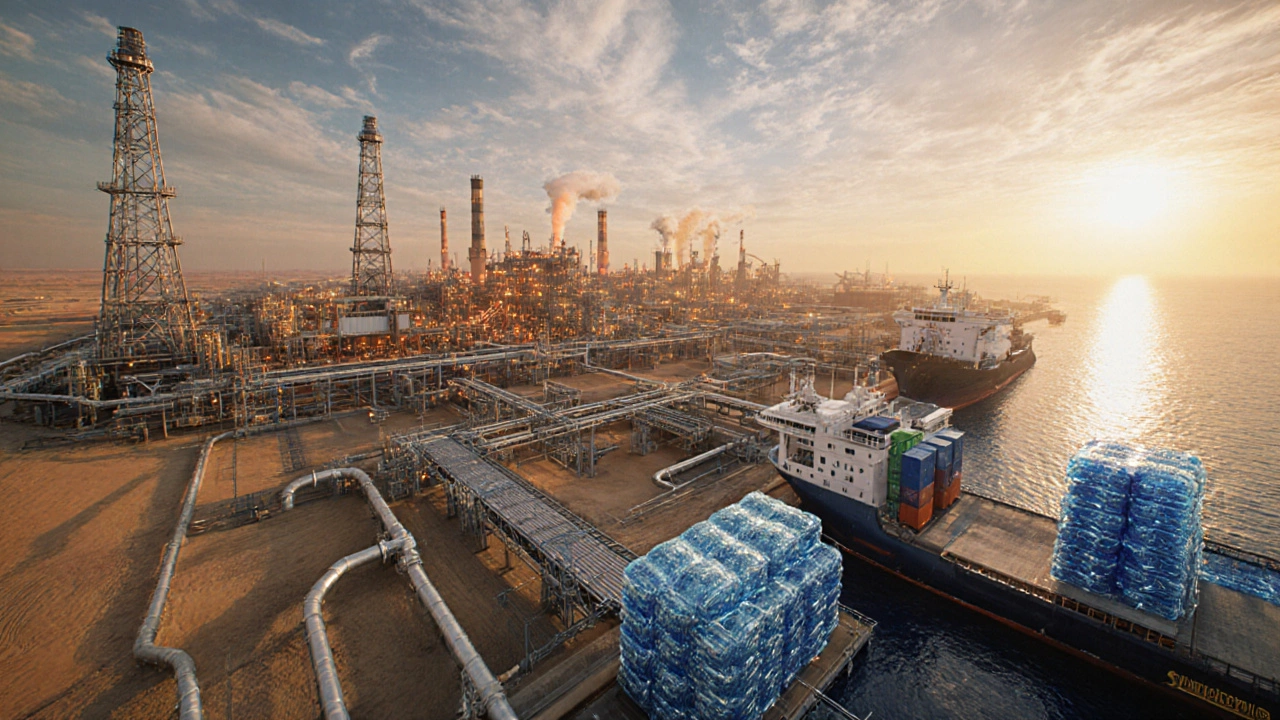



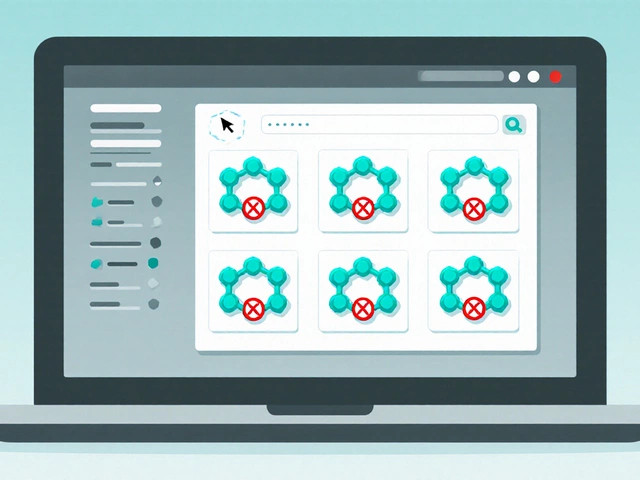
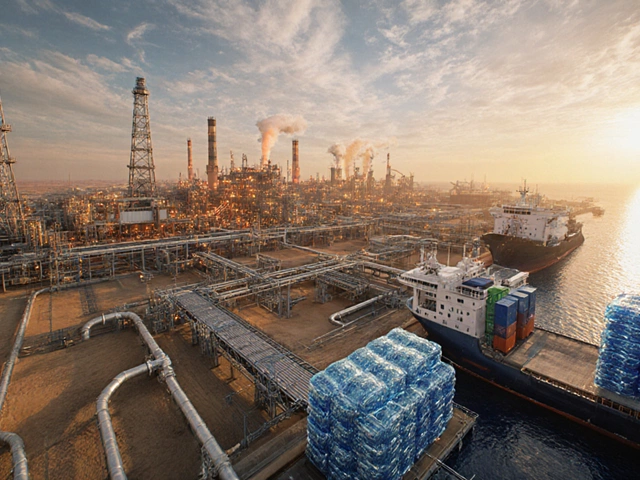
Write a comment